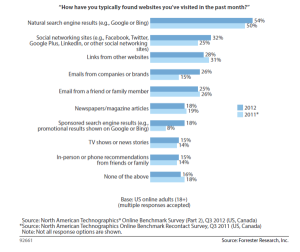If brands want to improve their customer perception, having a well-rounded social communications practice that serves both as a marketing outlet and as a place for consumers to solve service issues will help.
In a new study, J.D. Power and Associates measured consumer experience working with companies through their social platform for both marketing (such as receiving a coupon or some other offer through a social channel) and service (such as answering questions about a product or service or solving specific problems) needs.
The study was based on the responses of more than 23,000 consumers and covered 100 brands in six industries: airlines, auto, banking, credit card, telecom and utility. The bottom line: very few companies doing both marketing and service particularly well.
“Hardly any companies are doing equally well on social marketing and social servicing,” Jacqueline Anderson, director of social media and text analytics at J.D. Power, tells Marketing Daily. The discrepancy, she says, has a negative impact on brand perception.
The study found a correlation between a company’s overall social communications and a consumer’s likelihood to purchase and overall perception of the company. Among highly satisfied consumers (those with satisfaction scores of 951 or higher on a 1,000-point scale), 87% said their online interaction with the company “positively impacted” their likelihood of purchase from that company. Meanwhile, 10% of consumers with low satisfaction scores (less than 500) said their experiences with a company’s social communications “negatively impacted” their likelihood of purchase.
According to the study, nearly a third of consumers ages 30-49 and 38% of those over 50 interact with companies via social marketing (compared with only 23% of consumers 18-29). However, 43% of the younger demographic use the channels for social media interactions, while only 18% of those over 50 do.
Understanding exactly which consumers are using social media channels to what end will go a long way in helping companies improve their overall communications, Anderson says. Companies will have to evaluate how consumers are using their social media channels and then develop a strategy to address those patterns. This may require some of them to reorganize.
“It’s kind of a failure to understand why consumers are reaching out,” Anderson says. “Many companies are still organized around servicing on one side and marketing on the other.”
Among the industries evaluated, the auto industry is the only one that performs particularly well when it comes to marketing and servicing via social media. The wireless industry scores well when it comes to social servicing interactions, while utilities perform well in social marketing.










